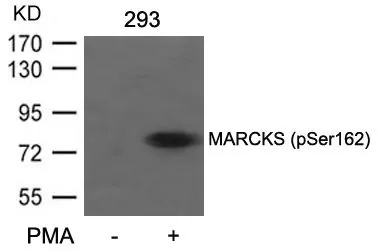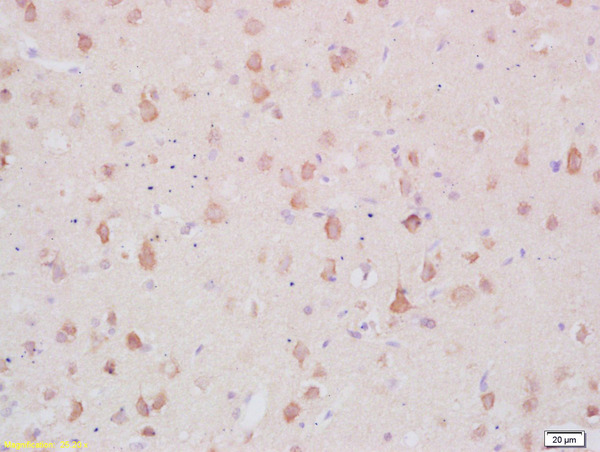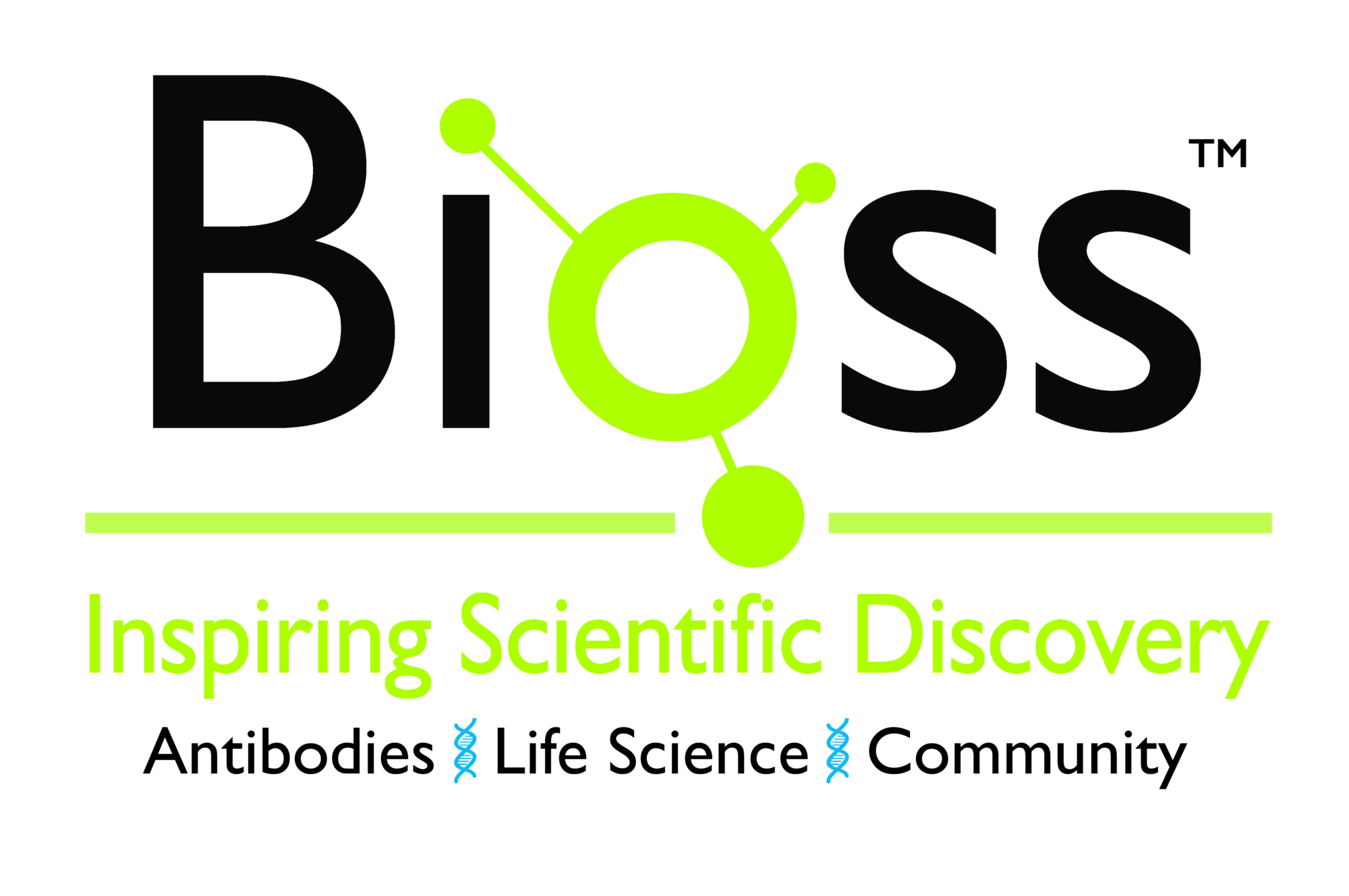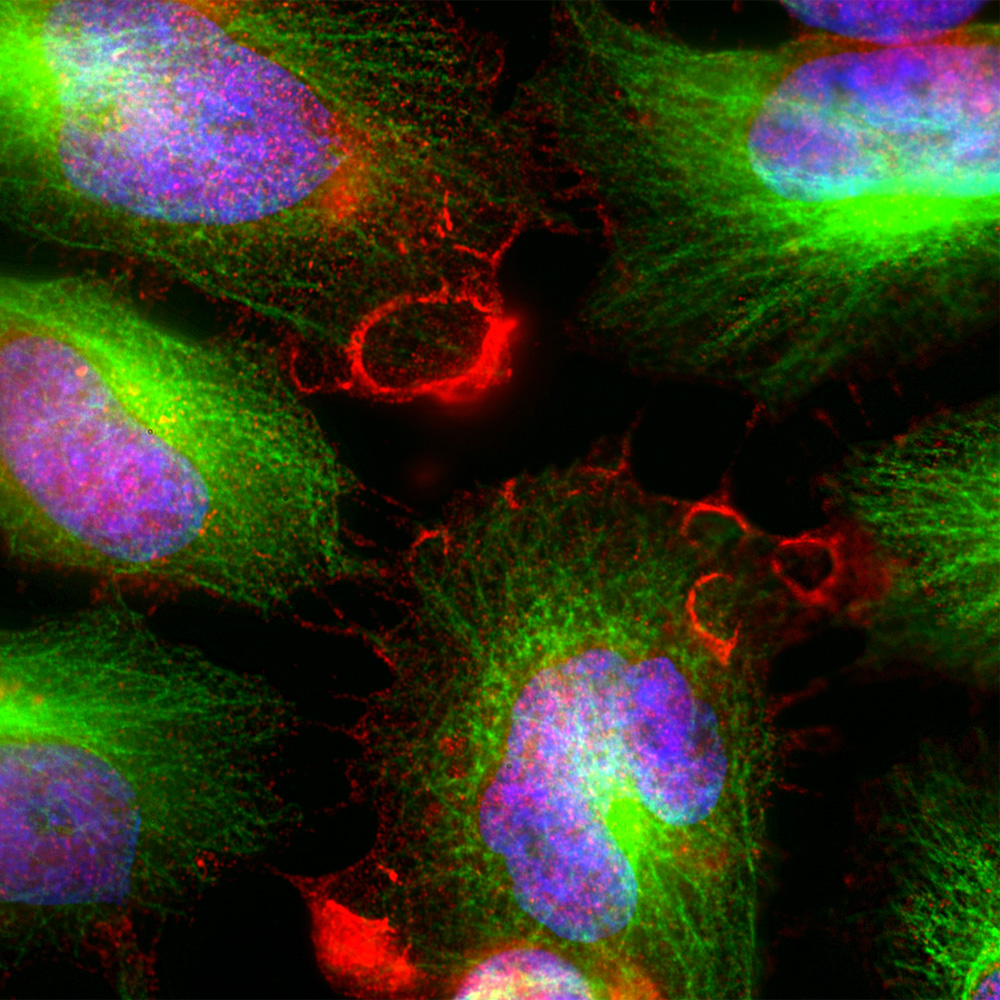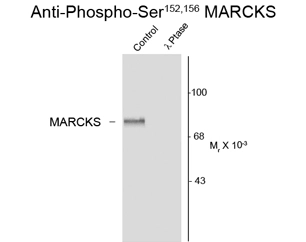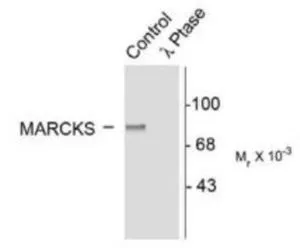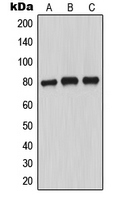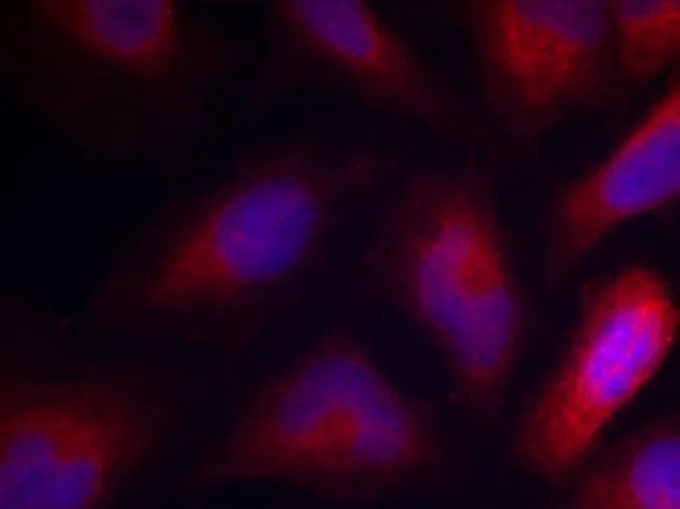
ICC/IF analysis of methanol-fixed HeLa cells using GTX50290 MARCKS (phospho Ser156) antibody.
MARCKS (phospho Ser156) antibody
GTX50290
ApplicationsImmunoFluorescence, Western Blot, ImmunoCytoChemistry
Product group Antibodies
ReactivityHuman
TargetMARCKS
Overview
- SupplierGeneTex
- Product NameMARCKS (phospho Ser156) antibody
- Delivery Days Customer9
- Application Supplier NoteWB: 1:500-1:1000. ICC/IF: 1:100-1:200. *Optimal dilutions/concentrations should be determined by the researcher.Not tested in other applications.
- ApplicationsImmunoFluorescence, Western Blot, ImmunoCytoChemistry
- CertificationResearch Use Only
- ClonalityPolyclonal
- Concentration1 mg/ml
- ConjugateUnconjugated
- Gene ID4082
- Target nameMARCKS
- Target descriptionmyristoylated alanine rich protein kinase C substrate
- Target synonyms80K-L, MACS, PKCSL, PRKCSL, myristoylated alanine-rich C-kinase substrate, myristoylated alanine-rich protein kinase C substrate (MARCKS, 80K-L), phosphomyristin, protein kinase C substrate, 80 kDa protein, light chain
- HostRabbit
- IsotypeIgG
- Protein IDP29966
- Protein NameMyristoylated alanine-rich C-kinase substrate
- Scientific DescriptionThe protein encoded by this gene is a substrate for protein kinase C. It is localized to the plasma membrane and is an actin filament crosslinking protein. Phosphorylation by protein kinase C or binding to calcium-calmodulin inhibits its association with actin and with the plasma membrane, leading to its presence in the cytoplasm. The protein is thought to be involved in cell motility, phagocytosis, membrane trafficking and mitogenesis. [provided by RefSeq, Jul 2008]
- ReactivityHuman
- Storage Instruction-20°C or -80°C,2°C to 8°C
- UNSPSC12352203

